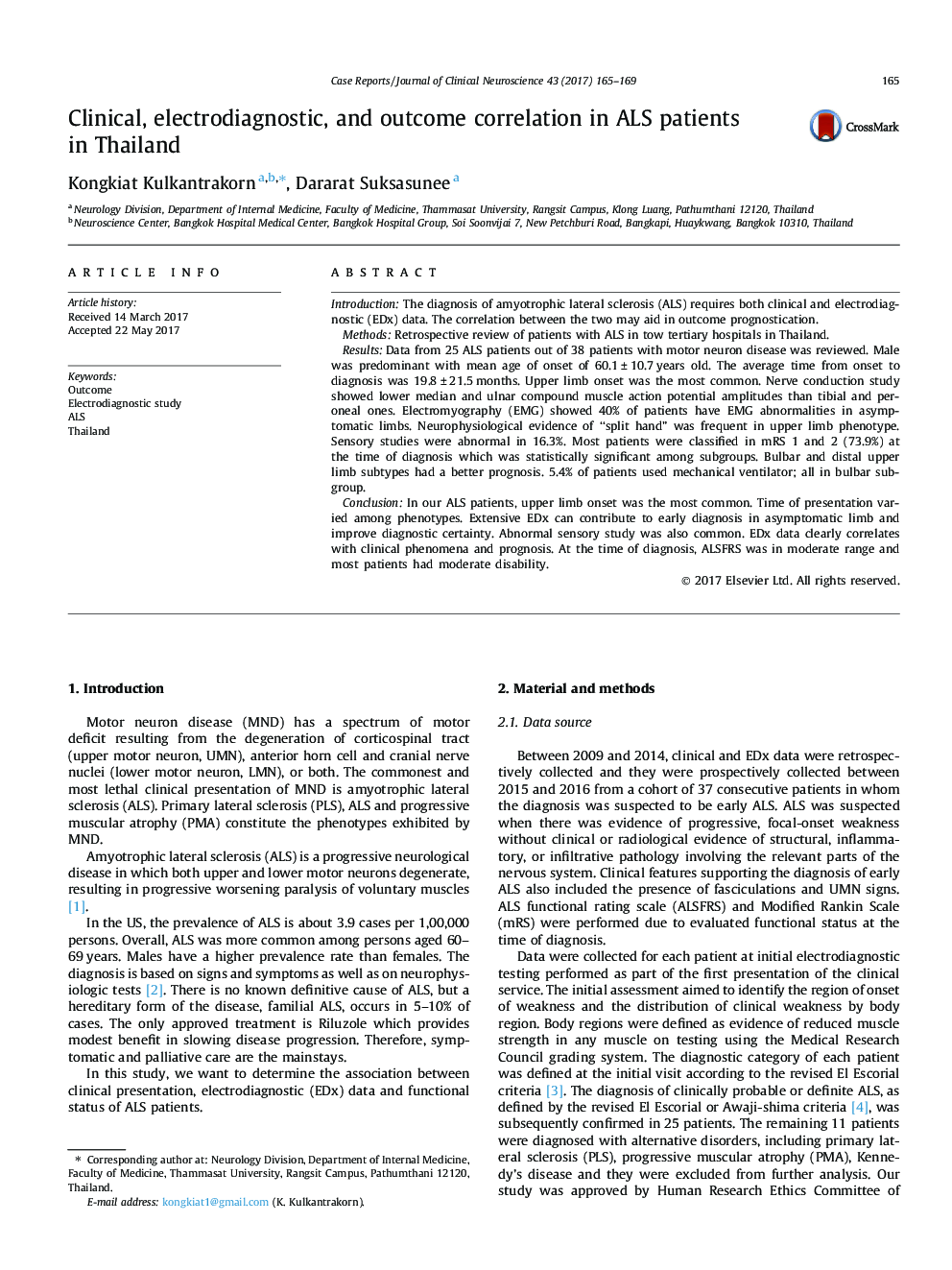| Article ID | Journal | Published Year | Pages | File Type |
|---|---|---|---|---|
| 5629655 | Journal of Clinical Neuroscience | 2017 | 5 Pages |
â¢Extensive electrodiagnostic study can contribute to early diagnosis in asymptomatic limb and improve diagnostic certainty.â¢Electrodiagnostic data clearly correlates with clinical phenomena and prognosis.â¢Abnormal sensory study was also common.â¢Bulbar and distal upper limb subtype had a better prognosis.â¢At the time of diagnosis, ALSFRS was in moderate range and most patients had a moderate disability.
Introduction: The diagnosis of amyotrophic lateral sclerosis (ALS) requires both clinical and electrodiagnostic (EDx) data. The correlation between the two may aid in outcome prognostication.Methods: Retrospective review of patients with ALS in tow tertiary hospitals in Thailand.Results: Data from 25 ALS patients out of 38 patients with motor neuron disease was reviewed. Male was predominant with mean age of onset of 60.1 ± 10.7 years old. The average time from onset to diagnosis was 19.8 ± 21.5 months. Upper limb onset was the most common. Nerve conduction study showed lower median and ulnar compound muscle action potential amplitudes than tibial and peroneal ones. Electromyography (EMG) showed 40% of patients have EMG abnormalities in asymptomatic limbs. Neurophysiological evidence of “split hand” was frequent in upper limb phenotype. Sensory studies were abnormal in 16.3%. Most patients were classified in mRS 1 and 2 (73.9%) at the time of diagnosis which was statistically significant among subgroups. Bulbar and distal upper limb subtypes had a better prognosis. 5.4% of patients used mechanical ventilator; all in bulbar subgroup.Conclusion: In our ALS patients, upper limb onset was the most common. Time of presentation varied among phenotypes. Extensive EDx can contribute to early diagnosis in asymptomatic limb and improve diagnostic certainty. Abnormal sensory study was also common. EDx data clearly correlates with clinical phenomena and prognosis. At the time of diagnosis, ALSFRS was in moderate range and most patients had moderate disability.
